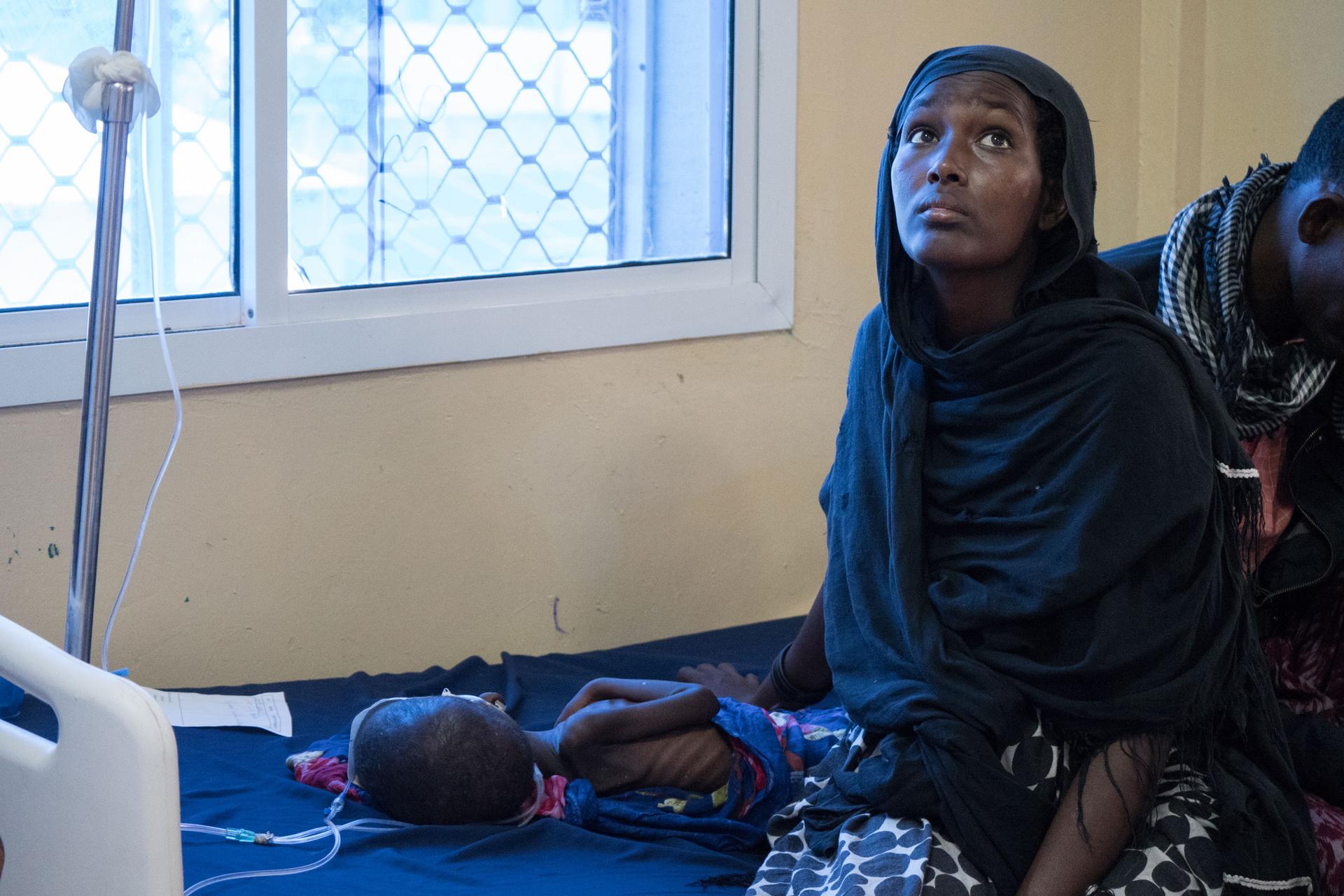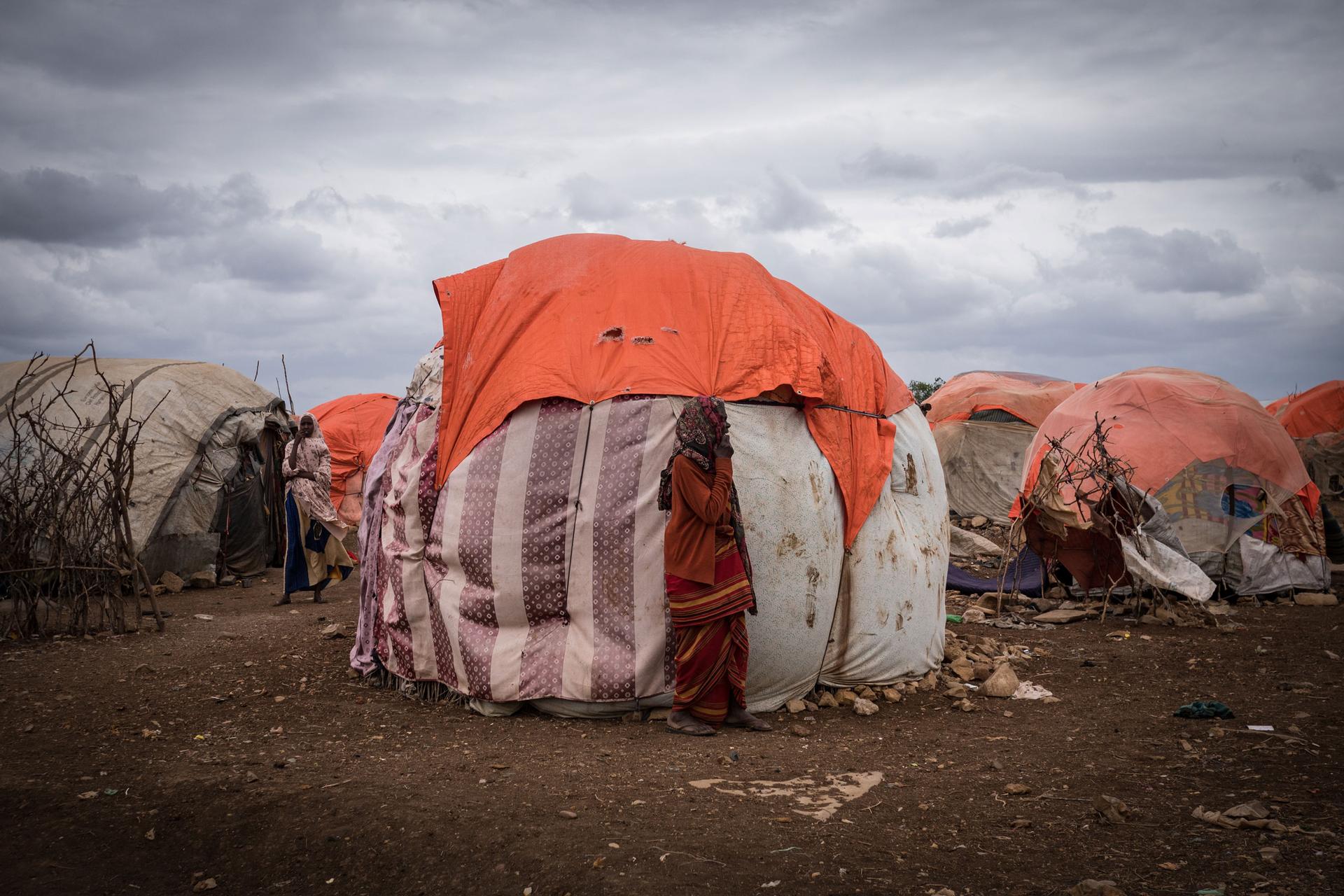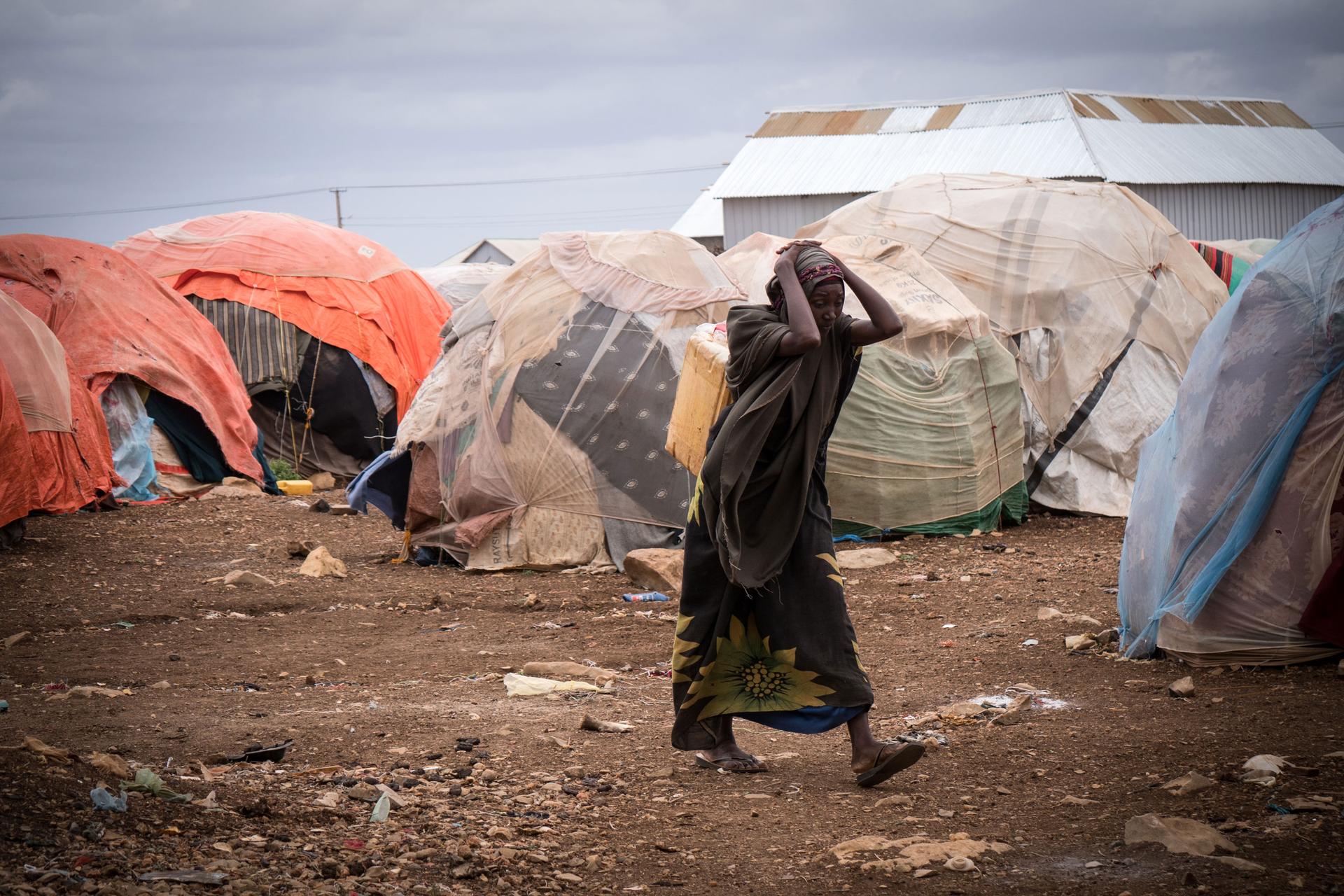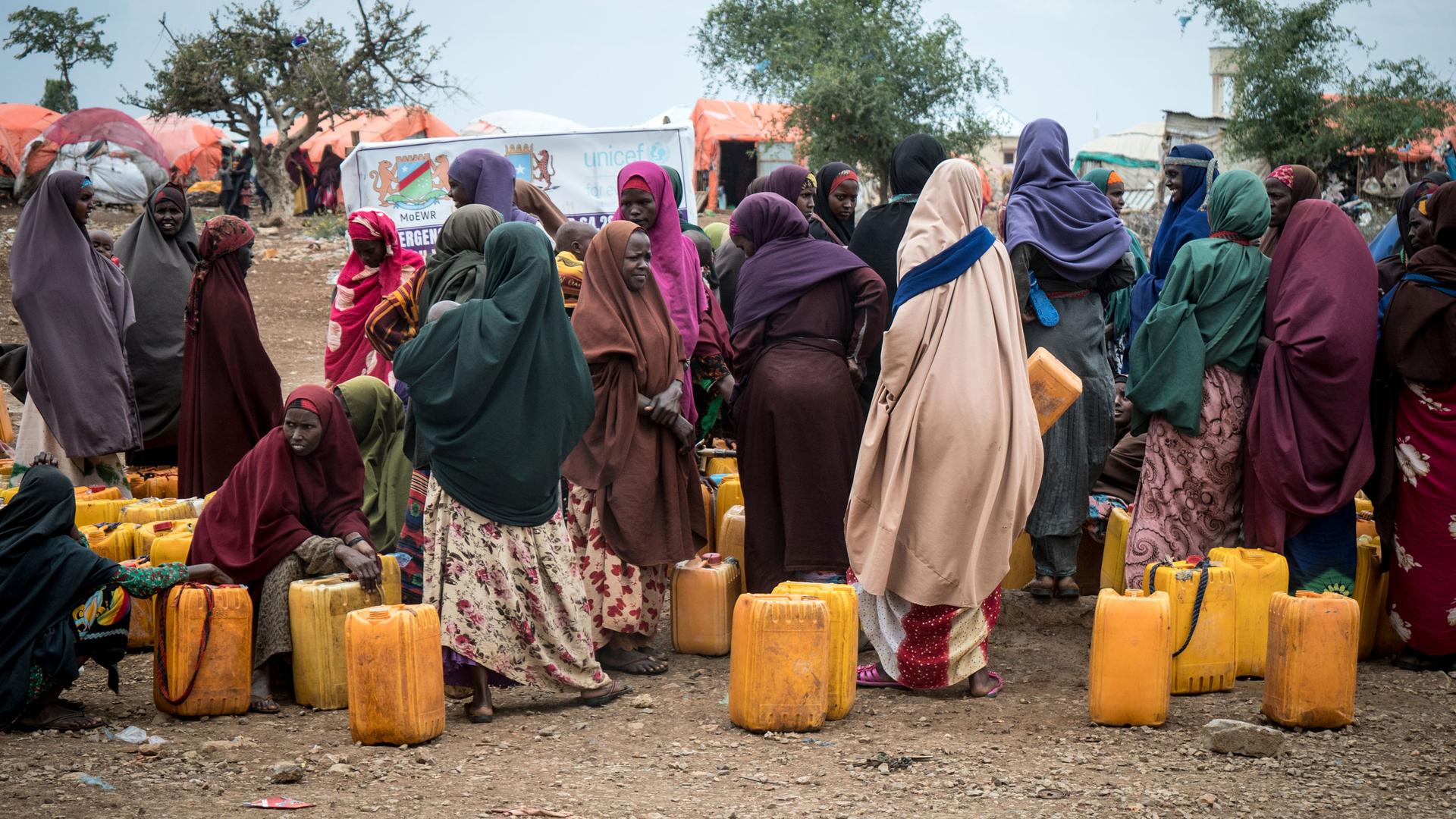At the Banadir Hospital in Mogadishu, a couple sat on a cot in the crowded malnutrition ward. Between them, their severely malnourished baby girl lay quietly, her ribs jutting out.
“The lack of food is why she became like this,” said Abdel Khadar Ali, the girl’s father.

The family came to Mogadishu after the drought killed off their livestock, joining a million others who have been displaced by this crisis.
When they arrived at a camp for internally displaced people on the outskirts of the city, however, they were still unable to find food, water or medicine to help their daughter.
“Malnutrition is increasing since this year, almost doubling,” said Dr. Awas Ollo, who runs the pediatric department.
“Drought and disease impact combined together increases the caseload of malnutrition,” he said.
The United Nations has said more than 700 children have died of malnourishment centers in Somalia this year. But the number could be higher, especially in hard-to-reach areas.
A new UN report has said parts of the country could experience famine from October to December. This includes Baidoa, where 42-year-old Hawa Ibrahim Bare has come searching for assistance.
“I’ve been here for three months,” said Bare from her makeshift shelter made of plastic, fabric, and sticks.
“There was no more food in my village.”

Normally, Bare and her family survive as farmers, harvesting maize, sorghum, and beans. But the past four consecutive rainy seasons have failed, meaning they haven’t been able to plant anything at all.
“We haven’t received any help here, ” Bare added.
Without humanitarian support, she’s had to rely on the good will of others.
In a recent visit to Somalia, the United Nations Under-Secretary-General Martin Griffiths called for a dramatic increase in humanitarian aid and warned that famine was at Somalia’s door.
“We will see mass deaths. We’ll see it happening to people who haven’t been reached if we’re not effective and we will see a way of life vanishing before the eyes of the world,” he said.
He noted how in recent years, the international community has successfully prevented a repeat of the 2011 famine, which led to the death of an estimated 250,000 people.
But he added that in the long run, Somalia needs solutions to break out of this cycle of drought and humanitarian emergency.

Back at the camp, Bare lamented the series of environmental crises she has experienced over her lifetime.
“This is my fourth drought,” said Bare. “I’m tired.”
She said if she gets help from the government or an nongovernmental organization, she will send her kids to school, so they don’t have to live as farmers, subject to the whims of an unpredictable environment.
Related: Somalia’s first environment minister aims to alleviate suffering from climate disasters
